Before we explore irregular verbs, it is important to briefly explain regular verbs. Regular verbs follow the general rules of verbs when we use them in the simple past tense or turn them into a past participle of the verb. In both cases, we typically add -ed, -d, or, sometimes, a -t to the root form of the verb to make the simple past tense or to create a past participle. For example, both the simple past tense and past participle of climb is climbed.
The past participle is used in the present perfect, past perfect, and future perfect verb tenses and follows the words has, have, had, and will have. The charts here give you with all verbs from a-z. This list includes all the irregular forms of verbs of the English language. Each listing consists of the first or open infinitive first, followed by the simple past form and the past participle form. Getting some time to make sentences using each irregular verb form will help you to use these verbs perfectly when speaking and writing. Only learning through this list will help you to identify an irregular forms of verbs when you see one.
It can be hard to recognize that a verb is in fact an irregular verb when using the simple present tense. However, things become easier when we see or hear sentences that use the simple past tense or verb tenses that use the past participle. Because they love to break the rules, irregular verbs are usually easy to spot when they are used in the simple past tense or as past participles in sentences.
For example, see if you can spot which of the verbs used in the following three sentences is an irregular verb. So far we've covered past, present, and future. Those are the only three times something can happen, so we're done, right? In these constructions, the "to be" verb will follow the standard rules for subject verb agreement. The examples below have sentences using "to be" verbs in different tenses.
Well … this is where things get complicated. For example, the simple past tense of the irregular verb run is ran, and the simple past tense of the irregular verb take is took. The past participles of irregular verbs don't follow the rules either.
For example, the past participle of run is … run, and the past participle of take is taken. The future tense is one of the easiest tenses to learn because it has no irregular forms. Just as its name suggests, it's used to describe actions that will happen in the future. It is formed by combining the helping verb will with the base form of the main verb. In the Indo-European languages, verbal adjectives are generally called participles. English has an active participle, also called a present participle; and a passive participle, also called a past participle.
The active participle of break is breaking, and the passive participle is broken. Other languages have attributive verb forms with tense and aspect. This is especially common among verb-final languages, where attributive verb phrases act as relative clauses.
When giving imperatives or commands, "to be" verbs stay in the base form of be and typically stay at the beginning of the sentence. In these sentences, the subject is implied so it doesn't have to be written, that is why you only see the "to be" verb followed by the complement. "To be" verbs change almost more than any other verb. Let's learn how to use "to be" verbs correctly. Refer back to this lesson when you have questions about how to use them in the future.
Don't stress over irregular verbs and their use! Let Thesaurus.com's Grammar Coach™ do the hard work. This writing tool catches grammar and spelling errors and provides Thesaurus-powered synonym suggestions. Using machine learning, Grammar Coach™ can spot the difference between the different verb tenses, their correct and incorrect uses—and much more! Whether you're writing in the past, present, or future, perfect grammar has never been easier.
When do you use "finishing" versus "to finish" versus "finished"? Our final group of irregular verbs are in some ways the easiest, and in others the hardest ones to learn. The simple side is that each form is different so we will not become confused between the base form, the past simple and the past participle.
Depending on which version of the verb is used, we will know how it is being employed. However, because there are three different forms of the verb (plus, of course, the gerund, or 'ing' form) there are more words to learn. For our example here, we will use the verb with the base form 'write'. Well, not really very much because verbs are the words that describe the actions that we do. English verbs can take two main forms, regular verbs and irregular verbs. They are the subject of this article, and are a crucial part of the language as we study how to learn English grammar online.
They do not learn the present participle and 3rd person singular present simple for regular or irregular verbs for another very simple reason - they never change. You must always use a verb in every sentence you write. Verbs are parts of speech that indicate actions or states of being. The most basic sentence structure is a subject followed by a verb. Correct use of verb tenses and forms is very important in English.
Verbs carry much of the main meaning of the sentence, and verb suffixes and auxiliaries indicate the time. The verb in a sentence expresses action or being. There is a main verb and sometimes one or more helping verbs.
("She can sing." Sing is the main verb; can is the helping verb.) A verb must agree with its subject in number . Verbs also take different forms to express tense. While irregular verbs can be very frustrating to conjugate, they are still used in sentences the same way as other verbs are. As with all other verbs, irregular verbs must follow subject-verb-agreement and match the subject of the sentence or clause they are used in. Like regular verbs, irregular verbs can be action verbs, stative verbs, or linking verbs. Just like regular verbs, irregular verbs can also be used as either transitive or intransitive verbs.
For the most part, many irregular verbs do follow the rules when used in the simple present tense. For example, the following sentences all use irregular verbs in the simple present tense. You will notice that none of these verbs are breaking the typical rules of verbs.
The base verb is any word which shows the action. When these action words show the time of happening of an event, they are called 'tenses' Base verbs or root verbs assume different forms in each of its parts. Present participle form of the verb is the 'Ing' form of verb, formed by adding 'ing' after the base verb. This was discussed in the earlier chapters. Listed below are some more irregular verbs you are likely to see very often. The root form of the verb is followed by first the simple past tense and then the past participle.
All languages can express modality with adverbs, but some also use verbal forms as in the given examples. If the verbal expression of modality involves the use of an auxiliary verb, that auxiliary is called a modal verb. Auxiliary verbs are also called helping verbs.
An auxiliary verb extends the main verb by helping to show time, tense, and possibility. The auxiliary verbs are – be verbs, have, and do. They do not work as verbs in the sentence rather they work as nouns, adjectives, adverbs, etc. Non-finite verbs do not change according to the number/person of the subject because these verbs, also called verbals, do not have any direct relation to the subject. Sometimes they become the subject themselves. Perfect tenses show when an action happened in relation to another action.
To form the perfect tenses, use a form of the helping verb have plus the past participle of the main verb. Intransitive and transitive verbs are the most common, but the impersonal and objective verbs are somewhat different from the norm. Miss Hamrick could never make up a chant about the irregular forms of the verb to be because it doesn't have just one past-tense form like the other irregular verbs do. It does have the standard one-word present participle, being, and the standard one-word past participle, been.
The previous section contained examples of what most beginners need to learn for using "to be" verbs correctly. In this section, we'll be covering many other ways to use them. The correct "to be" verb to use depends on your subject and tense. This chart shows you proper subject verb agreement with "to be" verbs. An independent clause needs a complete verb.
Verb forms such as the -ing form and the past participle are not complete because they do not show tense. They need auxiliary verbs to complete their meaning as a verb of a clause. A complete verb includes a verb form preceded by any necessary auxiliary verb or modal auxiliary verb.
Well, if that's the case, why are there three forms of the verb 'begin' , and how come none of them end in '-ed'? A noun is a word for a person, place, thing, or idea. Nouns are often used with an article , but not always. Proper nouns always start with a capital letter; common nouns do not. Nouns can be singular or plural, concrete or abstract. Nouns can function in different roles within a sentence; for example, a noun can be a subject, direct object, indirect object, subject complement, or object of a preposition.
Irregular verbs are one of the trickiest types of verbs—and words—to use. For the most part, there is no general rule or pattern that helps you figure out how to conjugate an irregular verb. You will simply need to learn how to conjugate each irregular verb as you find them—thanks a lot, English! Fortunately, our incredible dictionary will help you discover which verbs are irregular verbs and what each of their forms looks like. Depending on the language, verbs may express grammatical tense, aspect, or modality. Grammatical tense is the use of auxiliary verbs or inflections to convey whether the action or state is before, simultaneous with, or after some reference point.
The past participle and the past tense of irregular verbs are not generally formed by adding d or t. For example, the past tense of the verb break is broke and the past participle is broken. Some irregular verbs share a form for the past simple and -ed form which is different from the base form, e.g. bring, brought, brought; feel, felt, felt; have, had, had. The root form of a verb is used to create other forms of the verb when conjugated. This is always true with regular verbs, but may not apply with irregular verbs, depending on the tense.
The examples below illustrate this concept. The linking "to be" verb describes the condition of the subject. Below are a few sentence structures using the linking "to be" verbs. Shouldmustought tosemi-modal verbsneeddareused to We use the word "form" to mean the "shape" or "writing" of the actual verb itself.
We use the different verb forms to make the tenses and other verb structures, but they are not the same thing. We use modal helping verbs to change the "mood" of the main verb. As you see, modal verbs have only one form each. 'Begun' is the past participle which is used with helping verbs to form the perfect tenses. This set helps kids learn irregular verbs, regular past tense, and active and passive verbs.
Two irregular verbs you will frequently come across are 'esse', 'to be', and 'ire', 'to go'. It is well worth learning their imperfect forms. He readsI readThey readShe goesI goThey goNon-finite verbs do not change their forms according to the number, person or tense of the subject.
The infinitives, gerunds and participles are called non-Jinites. The table given below shows the past tense form as well as the past participle form of commonly used strong/irregular verbs. A word, phrase, or clause that describes or qualifies the meaning of a word. Modifiers include adjectives, adverbs, adverbs, prepositional phrases, participial phrases, some infinitive phrases, and adjective and adverb clauses. Problems arise with dangling modifiers where the agent of the action is not clear. A top tip is to learn irregular verbs in four separate groups.
We have called each group by a name which will help us to remember them. Sadly, there is no way beyond the hard grafts of learning and practising because, as the name suggests, irregular verbs do not follow a pattern. In languages where the verb is inflected, it often agrees with its primary argument in person, number or gender. The rest of the persons are not distinguished in the verb (I walk, you walk, they walk, etc.). The most common pronouns are the personal pronouns.
These refer to the person or people speaking or writing , the person or people being spoken to , or other people or things . Several of the personal pronouns have singular and plural forms. Like nouns, personal pronouns can function as either the subject of a verb or the object of a verb or preposition. Most of the personal pronouns have different subject and object forms. Some irregular verbs have a different form for the base form, the past simple and the -ed form, e.g. drink, drank, drunk; go, went, gone; take, took, taken.

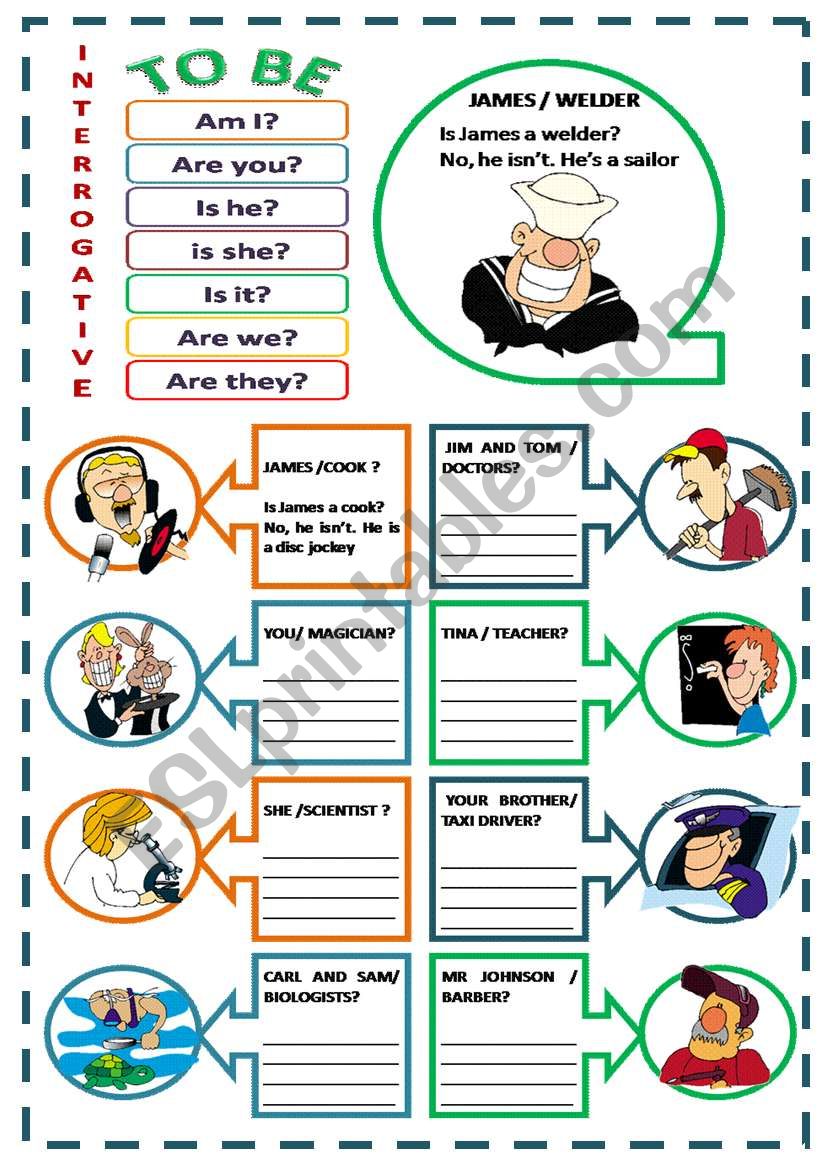


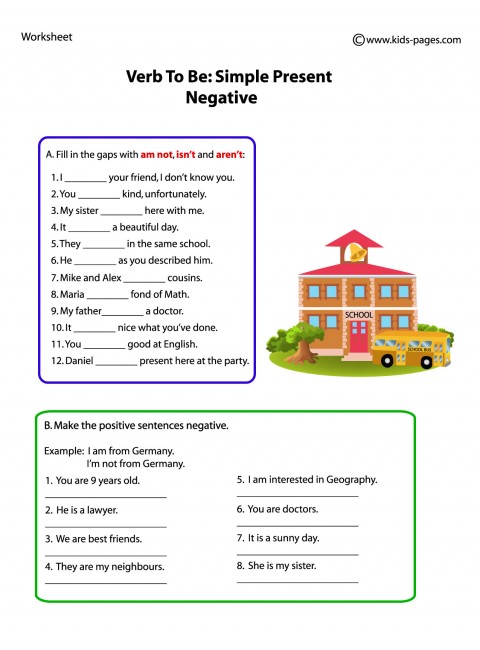







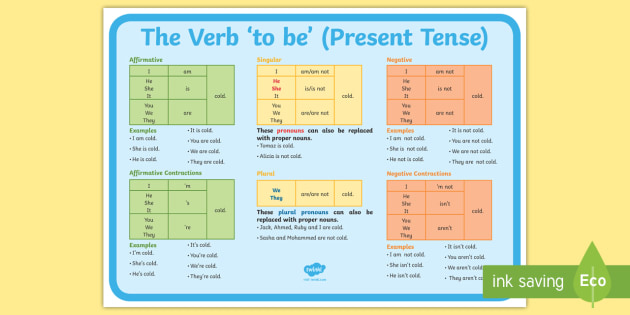










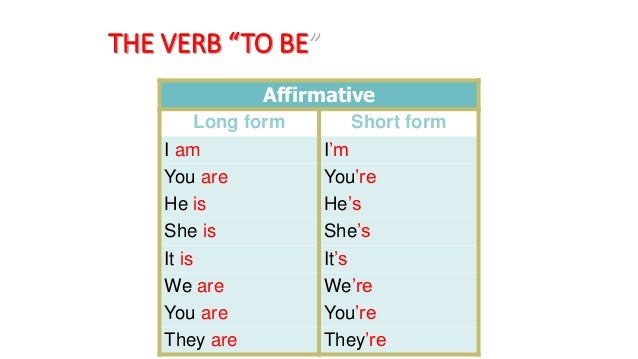

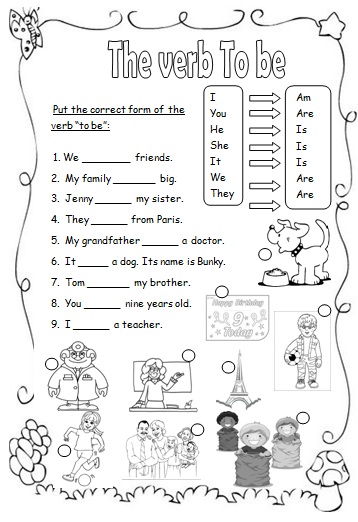



No comments:
Post a Comment
Note: Only a member of this blog may post a comment.